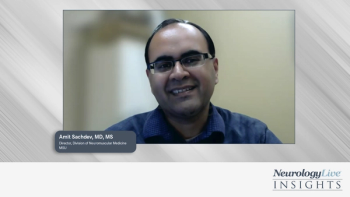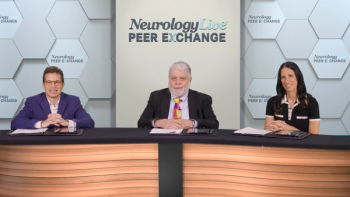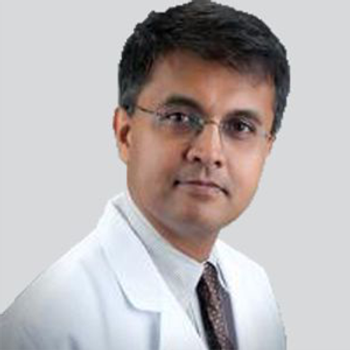
Preferred Treatment for Infantile Spasms Include ACTH, Oral Steroids
Investigators compared 4 treatment groups, concluding that nonstandard therapies were less effective in enacting freedom from treatment failure.
Findings from a recent study by the National Infantile Spasms Consortium suggest that adrenocorticotropic hormone (ACTH) and oral steroids are superior methods for treating infantile spasms when compared with nonstandard therapy.
The prospective, multicenter, observational cohort study included 423 children with infantile spasm that began at 2 to 24 months. Using chart review, investigators found freedom from treatment failure rates were 46% (88 of 190) for ACTH, 44% (42 of 95) for oral steroids, 37% (32 of 87) for vigabatrin, and 8% (4/51) for nonstandard therapy. Investigators accounted for estimated superiority of standard therapies, and higher E-values (9.2 and 9) suggested findings would not be contradicted with unmeasured confounding.
Vigabatrin, a GABA transaminase inhibitor, was estimated to be more effective than nonstandard therapies, but less effective than ACTH and oral steroids. Despite being underpowered for statistical significance, it was found to work for children with tuberous sclerosis complex (TSC), with freedom from treatment failure rates for those with TSC highest at 62% (13 of 21) when compared with other treatments at 29% ([19 of 65]; P <.05)
READ MORE:
A total of 423 children were included in the analytic cohort, with 206 excluded due to lack of treatment for infantine spasms (n = 35), having less than 60 days of follow (n = 82), not receiving treatment for more than 90 days after onset (n = 43), lack of recorded date for the last spasm (n = 35), not receiving a first drug after the last infantile spasm (n = 10), and having several recorded dates after the last known follow-up (n =1).
Children were then divided into 4 treatment groups: ACTH (n = 190); oral steroids, prednisolone (n = 73) and prednisone (n = 22); vigabatrin (n = 87), and nonstandard therapies (n = 51). Nonstandard therapies included topiramate, levetiracetam, clobazam, zonisamide, dietary therapies, rufinamide, and oxcarbazepine. Infants were free from treatment failure if no infantile spasms were recorded within 30 days of treatment initiation and no second treatment was prescribed within 60 days.
Investigators performed 6 pairwise analyses, comparing ACTH vs oral steroids, ACTH vs vigabatrin, oral steroids vs vigabatrin, and nonstandard therapies vs each standard treatment.
When looking at comparative effectiveness among the 4 treatment choices, investigators concluded that moving from oral steroids to ACTH did not affect freedom from treatment failure, staying consistent with observed 44% and estimated 44% (95% CI, 34-54). Changing from vigabatrin to ACTH, not including children with TSC, did improve response from 29% to an estimated 42% (95% CI, 15-75). Changing from vigabatrin to oral steroids also saw improvement, moving from observed 29% to an estimated 42% (95% CI, 28-57).
Changing from nonstandard therapies to standard therapies saw more consistent rates of improvement, including 6 of 7 outcomes for ACTH, 3 of 4 for oral steroids, and 1 of 4 for vigabatrin. Moving from nonstandard therapy to ACTH improved freedom from treatment failure rates from 8% observed to an estimated 39% (95% CI, 17-67). Moving to oral steroids from nonstandard therapies improved rates from 8% to an estimated 38% (95% CI, 15-68); and changing to vigabatrin also showed improvement from observed 8% to an estimated 20% (95% CI, 6-50).
“Of importance, nonstandard medications are a poor choice for infantile spasms and rarely successful (4 in 51 free from failure). Topiramate, in particular, is commonly used for infantile spasms due to early reports suggesting its efficacy and was used in about half of the non-standard therapy group in our data. However, recent reports have increasingly found it ineffective,” investigator Zachary M. Grinspan, MD, MS, interim chief of child neurology and director, pediatric epilepsy program, Weill Cornell Medicine, and colleagues wrote. “We recognize, however, there are other potential explanations for the poor response to nonstandard medications, i.e., selection of nonstandard medication could be a marker of unobserved predictors of poor response, though the E-values above 9 indicate these predictors would need to have large differences in prevalence and an enormous effect size.”
The study was limited, as it was observational, and therefore not as robust as a randomized control trial, which would potentially be unethical in this case due to low rate of response in the non-standard therapy arm. Bias was also a limitation, due to the removal of cases with incomplete or inconsistent data, as well as unreliable dosage data and the potential for spasm recurrence outside of the study’s 60-day follow-up period. Future research is necessary to investigate the potential for combination therapy, particularly of vigabatrin and hormonal therapy, as well as the ACTH and its observed ability to resolve hypsarrhythmia more quickly than oral steroids.
REFERENCE
Grinspan ZM, Knupp KG, Patel AD, et al. Comparative effectiveness of initial treatment for infantile spasms in a contemporary US cohort. Neurology. Published online July 15, 2021. doi:10.1212/WNL.0000000000012511
Newsletter
Keep your finger on the pulse of neurology—subscribe to NeurologyLive for expert interviews, new data, and breakthrough treatment updates.




































